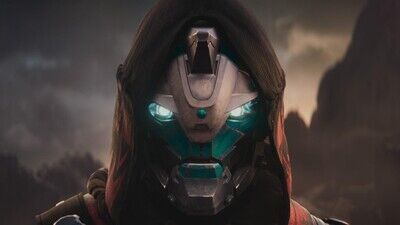Cayde remembers what it was like to die and return to the Traveler’s Light, he says. He remembers the warmth, the peacefulness of that place, and being reunited with Sundance, his Ghost. The Traveler doesn’t speak to us in “Destiny,” but our Ghosts do, and Cayde believes it’s all connected anyhow: the Guardians, their Ghosts, the Traveler, the Light. Separateness, in other words, is an illusion; we’re all one. This belief alone is our common ground with the Witness (Brett Dalton), a many-armed god seeking to dominate and control all life in the universe.
We look for comfort and meaning in the familiar, finding certain patterns and shapes over and over — in nature, in mythology, in art. And “Destiny” is a big, gloriously weird tapestry of hard sci-fi and fantasy, inspired by everything from “Star Wars” and “2001” to “True Detective” and ancient Mesopotamian myth. Often, the game can be pretty opaque, while other times it’s a little obvious and simplistic in how it presents its concepts. (This is a saga of concrete Light and Darkness, after all.) But its final conflict is straightforward enough. A titan of smoke and shadow has imprisoned whole civilizations within its hivemind, bending victims’ wills to whatever purpose it sees fit and turning their bodies to stone. Humanity is its next target, it’s here, and the power of the Traveler is our only hope to stop it.
In last year’s expansion, the Witness tore a great triangular hole in the Traveler, and “The Final Shape” takes place almost entirely inside it. This leads to a plane of reality called the Pale Heart, a “surreal domain of memory,” according to the in-game map of our solar system. Cayde and his mentor once swapped theories for what might be inside the mysterious machine floating above the Earth. “Nothing,” said Cayde-6. To which his mentor countered: “Everything.” And he was just about right. The Traveler’s interior is cosmically, impossibly vast. Still, its terrain is also familiar to players who have played the original “Destiny” or the original “Destiny 2” campaign (which has been inaccessible since 2020). For some developers, this would be a ludicrous swing. But Bungie has been building worlds for a long time, and these environments are breathtaking in a way that “Destiny” hasn’t been since I first laid eyes on the European Dead Zone and Nessus seven years ago. The studio’s artists have set a new bar for themselves with the Pale Heart, a place I suspect I’ll be spending a lot more time in as the year goes on.

